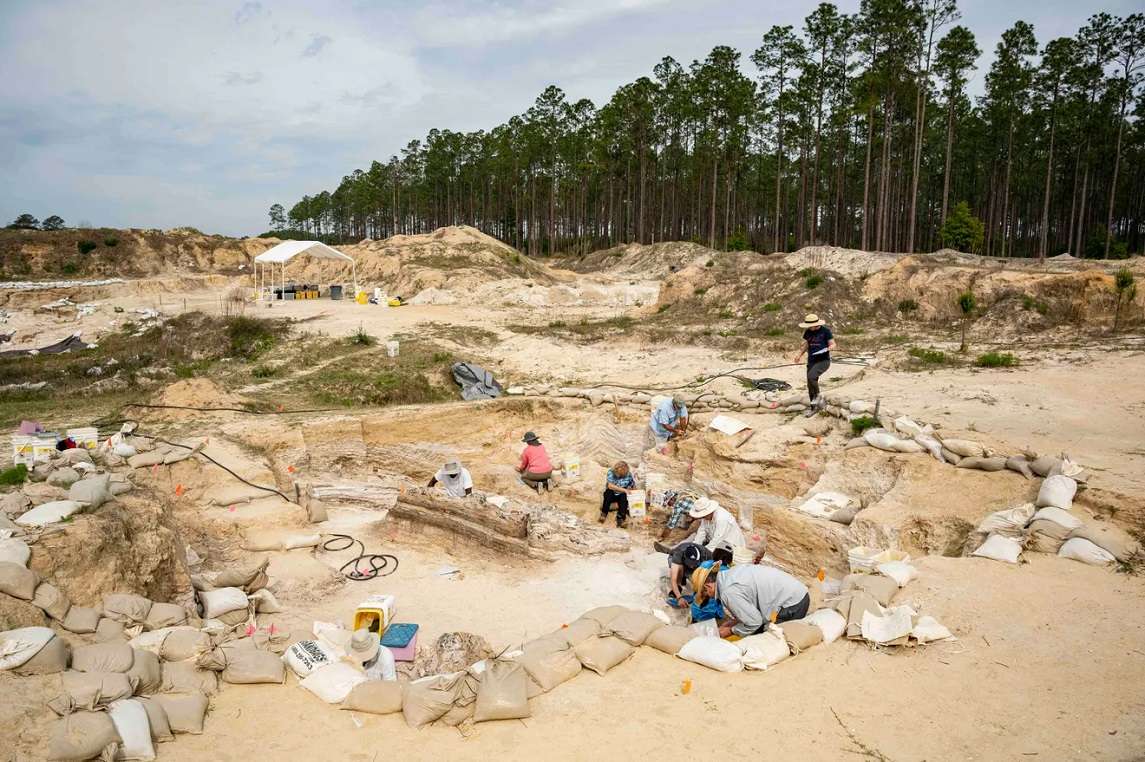A team of paleontologists from the Natural History Museum of Florida discovered a graveyard gomphotheresan extinct animal related to elephants.
The discovery, described as “unique” by the head of the team, Jonathan Bloch, has not been made public until now, although the first remains of one of the animals in the cemetery were found in 2022 45 miles south of the city of Gainesville at a fossil site called the Montnrook Fossil Dig, the newspaper reported Friday. Penscola News Journal.
#ICYMI Paleontologist Jonathan Bloch showed @wjxt4 around our Montbrook dig site and talked about the newest fossils being excavated, including an exciting gomphothere specimen:https://t.co/t51cgc6WHC
? #FossilFriday with @BlochLab @jibloch— Florida Museum (@FloridaMuseum) May 26, 2023
The research team soon realized that there were several complete skeletons, including one adult and at least seven juveniles, according to the newspaper.
At that same site, where paleontologists have been working for more than seven years, the oldest deer in North America, the oldest known skull of a saber-toothed cat and a new species of extinct heron have been discovered. Remains of bone-crushing dogs and bears have also been found, says a report from efe.
“This is a once-in-a-lifetime find. There is the most complete gomphothere skeleton from this period in Florida and it is among the best in the Americas,” said Bloch, curator of vertebrate paleontology at the Florida Museum.
The gomphotheres in this cemetery probably died over five million years ago near a river that dried up long ago.
According to Rachel Narducci, collection manager for vertebrate paleontology at the Florida Museum of Natural History, it is likely that the fossils were successively deposited or transported to the area.
“Modern elephants travel in herds and can be very protective of their young, but I don’t think this was a situation where they all died at once,” he said.
“It appears that members of one or more packs were trapped in this location at different times,” he added.
The Florida Museum believes the site is between five and five and a half million years old, between the late Miocene and the earliest Pliocene of the Hemphillian Age of North American Land Mammals.
The site where the skeletons were found is an ancient river system located about 30 miles (48 km) inland from the Gulf of Mexico, but the area was much closer to the sea when the bones were first deposited there.
Gomphotheres are extinct relatives of modern elephants and mammoths. They belong to a larger group called proboscideans, which includes all extinct and modern elephant species and their close relatives, according to the Florida Museum. The group is characterized by a long proboscis, or proboscis, and large tusks.
With information from Efe.















